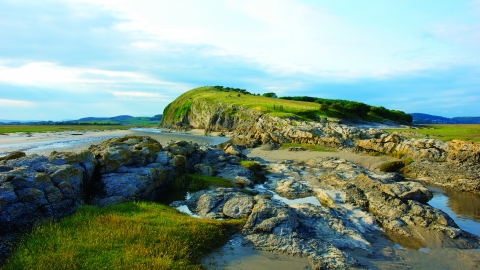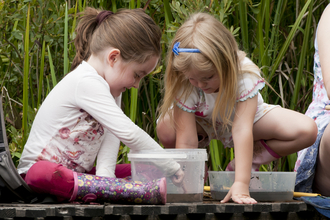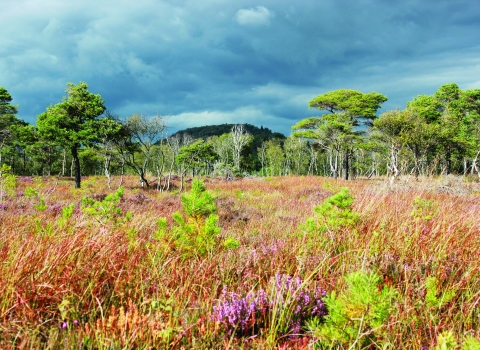
Humphrey Head Nature Reserve - Joy Ketchen Memorial Reserve © John Morrison
Location
OS Map Reference
1:50,000. Sheet no. 97Grid reference: SD 39100 73700
Getting here
By car:
From Grange-over-Sands take B5277 towards Flookburgh. Just beyond Allithwaite turn left, cross the railway, turn left again and follow road towards the Head. Pass the farm and continue until a track with a public bridleway (part of Cumbria Coastal Way) leads off left. Park here without blocking the track as rescue vehicles require access at all times. Alternatively, continue along the lane to the Holy Well Lane car park at the road end and walk back. The reserve is reached through the kissing gate next to the cattle grid, and walking up the access road of the outdoor centre. Turn right onto the field at the telegraph pole. The outdoor centre is private property and not open to the public.
By bicycle:
The reserve is 1km/0.6miles from National Route 700 The Bay Cycleway.
By public transport:
Trains run from Barrow-in-Furness, Ulverston, Grange-overSands and Lancaster to Kents Bank. Buses run from Cartmel and Grange-over-Sands to Allithwaite and Kents Bank.
View on What3Words
Know before you go
Dogs
When to visit
Opening times
Open all year round.Best time to visit
April to JulyAbout the reserve
Humphrey Head is a striking limestone peninsula that’s important for its flora and fauna, as well as its geological exposures.
Wildlife highlights
- Awe-inspiring peregrine falcons can be seen hunting for birds in flight
- Watch the birds on the estuary as the tide forces them closer to shore – shellduck, curlew and redshank can be seen gathering on the saltmarsh around the head
- Specialist plants tolerating the harsh conditions of the salt spray include thrift, Portland spurge and rock samphire
- In spring look for green-winged orchids. Blue moor grass is in flower.
- Summer is a good time to see all the limestone grassland plants in flower.
- In winter watch wading birds such as curlew, redshank and snipe off the shore.
- Any time of year look out for Lancastrian whitebeam and take in the fine views over Morecambe Bay.
What makes Humphrey Head so special?
The nature reserve covers the western cliffs, which have the main botanical interest and the fields on top of the head.
Humphrey Head wood is not part of the nature reserve but has some old stunted oak trees and in spring is a carpet of bluebells and wood anemones.
Plant life
The nature reserve's close proximity to the sea, combined with the underlying limestone rock give rise to an unusual combination of plants.
Rare plants such as spiked speedwell and spotted cat’s ear are found here further north than any other populations.
On the cliff top, the flora improves each year thanks to grazing and fertiliser-free management: limestone bedstraw, green-winged orchid, common and hoary rock-rose, wild thyme and blue moor-grass all grow well. Here the limestone grassland is grazed. Where the sheep cannot reach, bloody crane's-bill and spiked speedwell grow while Lancastrian whitebeam is abundant on the cliffs.
On the lower cliffs, towards the end of Humphrey Head the salt spray prevents many plants from becoming established. Here you can find thrift, Portland spurge and rock samphire which tolerate such conditions.
Look out for small outcrops of limestone pavement and the wind-blown hawthorn trees.
Birds on the estuary
This is a good place for watching birds on the estuary, particularly when the tide forces them to the shore.
Look out for shelduck, curlew and redshank. Peregrines regularly breed on the nature reserve.
Keeping it special
Humphrey Head has been leased from Holker Estate since 1992 and was established as a nature reserve in memory of Joy Ketchen, the Trust's first conservation officer.
Species
Contact us
Environmental designation
Did you know?
England's last wolf is said to have been killed on Humphrey Head.
Upcoming events at Humphrey Head Nature Reserve
If there are any upcoming events at Humphrey Head Nature Reserve we'll show them to you below.

Support our conservation work on this nature reserve,
and protect Cumbria's wildlife & wild places.







